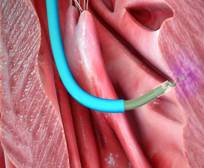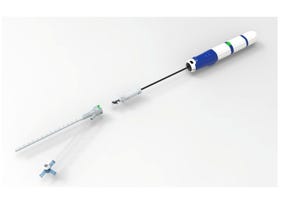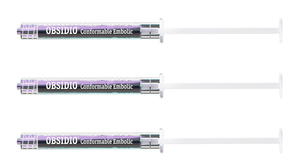A new study showed that stem cell delivery using BioCardia's Helix system resulted in up to 18 times better heart tissue retention of stem cells compared to some standard methods.
June 2, 2017
BioCardia had its work cut out for it when the company entered the cardiovascular regenerative medicine space. Delivering stem cell therapies into a moving heart - and keeping them there - is inherently difficult. But the San Carlos, CA-based company was up to the challenge, and designed a delivery system that uses a tiny helical needle (like a corkscrew), instead of the more commonly used straight needle, and that appears to be making quite a difference.
According to new data from a pre-clinical animal study, published in the International Heart Journal, BioCardia's Helix transendocardial delivery system resulted in up to 18 times better heart tissue retention of stem cells compared to intra-coronary artery infusion, and three times higher retention than therapies injected directly into the heart during open surgery using a straight needle.
How It Works
The Helix is a two-catheter system in which the outer catheter serves as a steerable guide catheter delivered through a blood vessel in the groin and navigated up to the heart. Once inside the heart chamber, the inner device - the helical needle - is advanced until it touches the heart tissue. Then, the corkscrew-like needle is rotated into the tissue to anchor the device during therapeutic delivery. This fixation to the beating heart wall is intended to provide for stability and control during the delivery procedure, according to BioCardia. |
The Helix delivery device is also being studied in a Phase III clinical trial that is expected to enroll up to 260 patients at up to 40 U.S. centers. BioCardia CEO Peter Altman told MD+DI that if the trial is successful, the company will use the data to support a FDA premarket approval application. Even though CardiAMP is a stem cell therapy, everything associated with the product will be regulated as a medical device because it incorporates a drug-delivery system, Altman said.According to the study's lead author, Yoshiake Mitsutake, MD, of Stanford University's Division of Cardiovascular Medicine, the results suggest that using a transendocardial helical infusion delivery system, such as the Helix device, has the potential to improve clinical outcomes for cardiovascular cell-based therapy.
The system also includes a molecular diagnostic technology designed to determine if a patient is an optimal candidate for the therapy, based on the potency of their bone marrow cells. If the patient qualifies, their cells are processed at the bedside using a special point-of-care platform technology.
By using a helical needle instead of a straight needle, the Helix system is intended to give the cardiologist more control during the delivery process. It's also similar to the active fixation pacing leads that have been used extensively in the heart.
"Helical needle electrodes have been used for 25-plus years in millions of patients, so we knew going into this that this was something that was easy to do safely," Altman said. "Although, a pacing lead is only placed at one portion of the heart and when we do our deliveries we go to a number of locations around the heart."
Another advantage of the helical needle is that it increases retention of the therapy inside the heart muscle. When a straight needle is used to deliver cell-based therapies, Altman said, the therapeutic agent is more likely to be squeezed right out through the injection site as soon as the heart contracts. Because of the way the helical needle is rotated in and out like a corkscrew, however, the therapeutic agent does not have a direct pathway, and that pathway actually closes up during the heart's contraction.
The system also uses a puff of contrast, delivered to the base of the needle, right before the therapy is delivered, to ensure proper placement using standard fluoroscopic imaging.
"We have intentionally not incorporated complex electroanatomical mapping or external imaging modalities that are integrated with some proprietary platform because we wanted to enable delivery in every cath lab in the world," Altman said.
BioCardia is focused on using the delivery system to treat ischemic systolic heart failure, which Altman said affects roughly 1.7 million patients in the United States alone. The CardiAMP therapy is designed to deliver a high dose of a patient's own bone marrow cells directly to the point of cardiac dysfunction, potentially stimulating the body's natural healing mechanism after a heart attack.
Patients who receive the CardiAMP therapy are still eligible for other cardiovascular therapies, including a pacemaker or defibrillator, and vice versa, Altman said. The only device-based therapy that currently excludes patients from CardiAMP, he said, is an aortic valve device, because the Helix system enters the heart through the aortic valve.
About the Author(s)
You May Also Like





